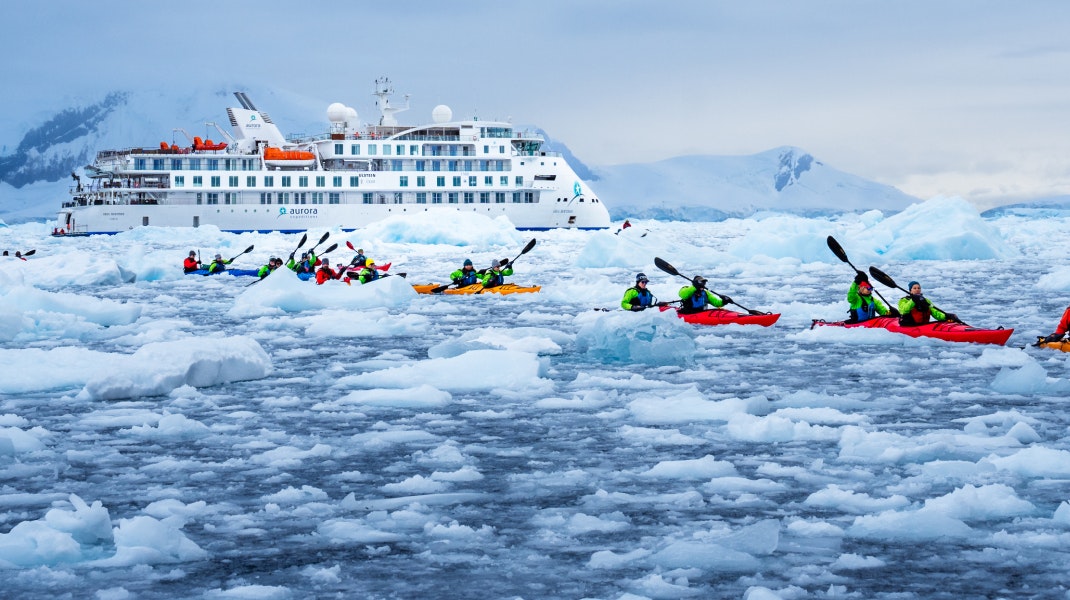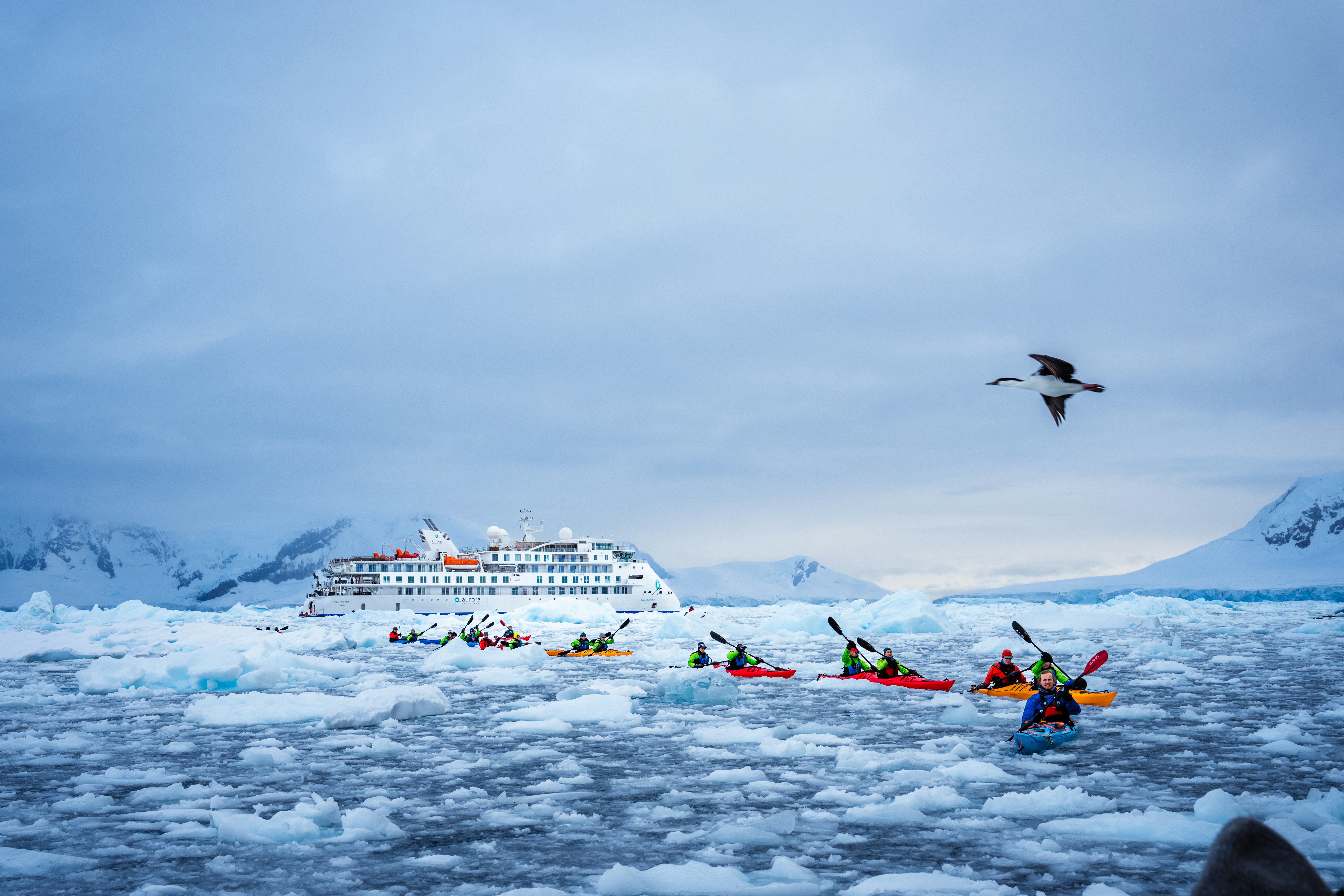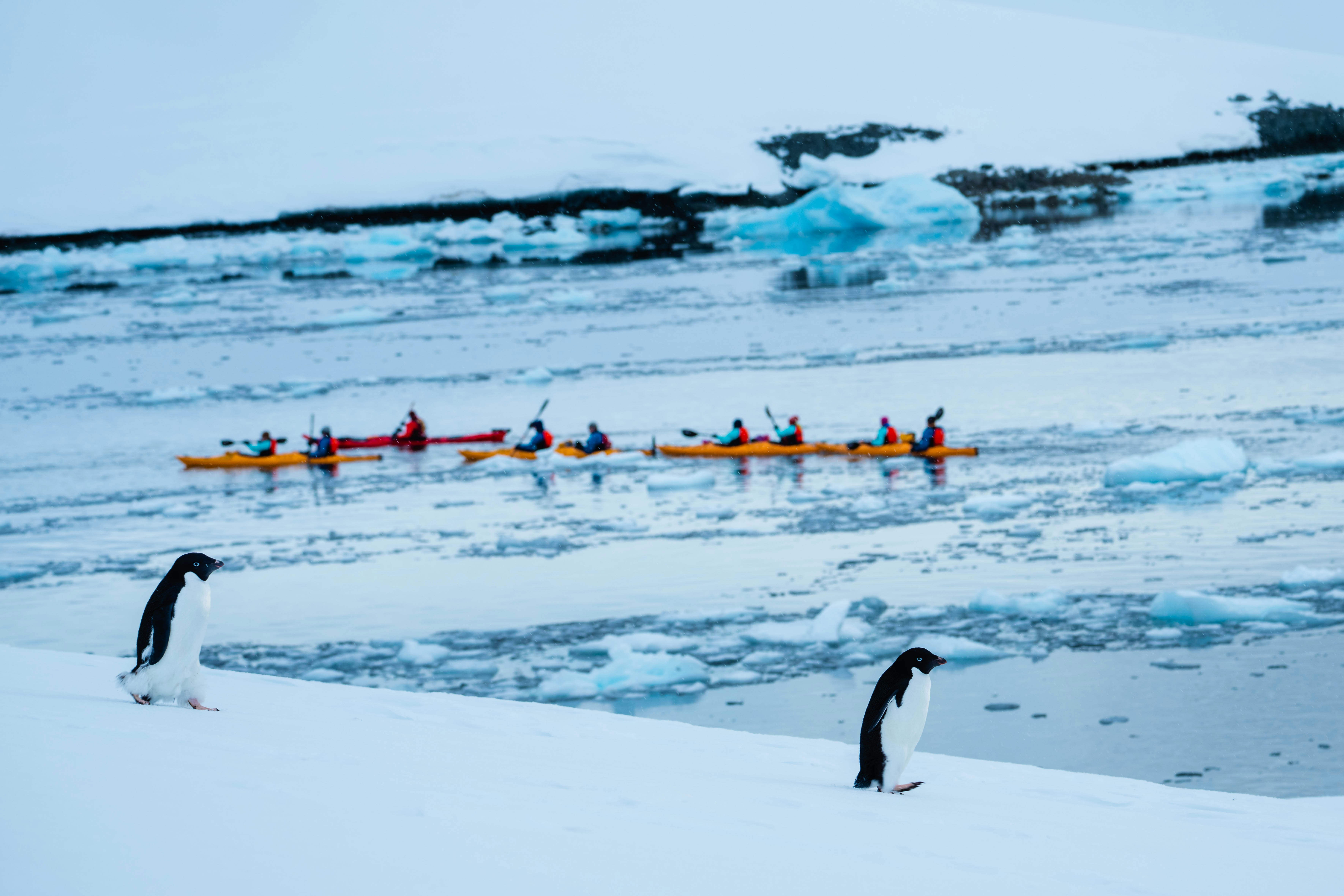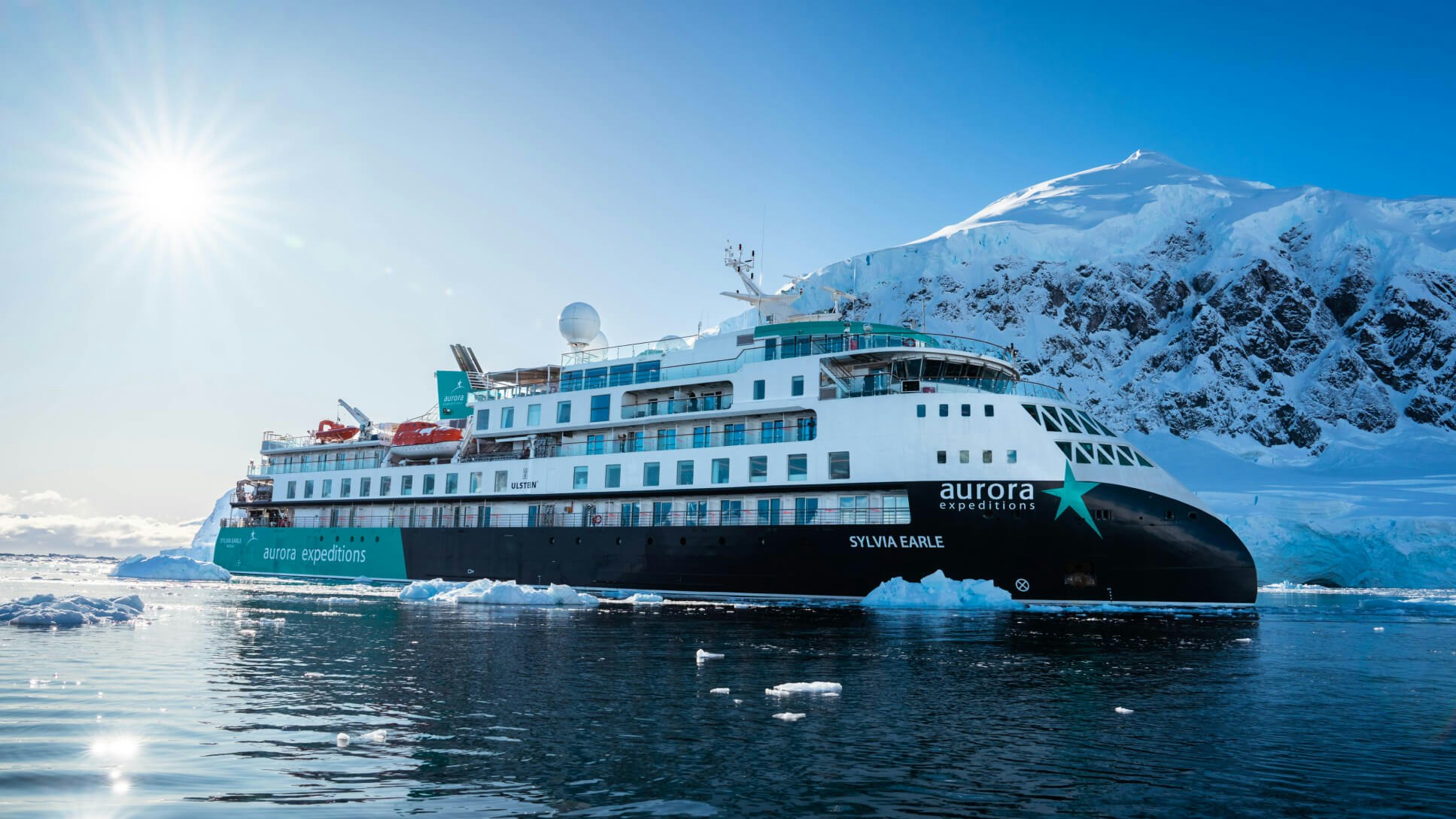Having made your way to Reykjavik, you will be met by a representative of AE Expeditions and transferred to our group hotel. Upon arrival at your included hotel, please visit the AE Expeditions hospitality desk to collect your luggage cabin tags and to speak with our ground operations team, who may have information to share with you about pre-embarkation or to provide you with information about where to dine, withdraw cash or purchase last minute items from a local pharmacy or supermarket.
The remainder of your time is at leisure. All meals today are at your own expense.
Accommodation: The Grand Hotel Reykjavik

This morning, please ensure your cabin luggage is fitted with cabin tags clearly labelled with your name and cabin number. Your luggage will be collected from your hotel and transferred directly to the port for clearance and delivered to your cabin ahead of your arrival on board. Please keep any valuables or personal items with you throughout the day.
Today we follow the path of one of Reykjavik’s most popular seismic attractions – the Golden Circle. Stops along our route include Thingvellir National Park, accredited as the site of Iceland’s first parliament. A shaky start to the new nation, it is also the point where the Eurasia and North American tectonic plates meet as an open fissure. Our next stop is Gullfoss waterfall. This impressive water feature tumbles 34 meters into the Hvítá River, offering a popular photographic opportunity. Next we explore the geothermal fields and geysir’s for which Iceland is famous. The variety of hot springs and bubbling pools are mesmerising as the sheer capacity of water and steam erupting from the ground makes you ponder just how much power is beneath your feet. Late afternoon we return to Reykjavik to board the Sylvia Earle.
After boarding, there’s time to settle into your cabin before our important safety briefings before we ‘throw the lines’ to begin our Greenland adventure. This evening, meet your expedition team and crew at the Welcome Dinner.

Crossing the Greenland Sea, we sail through the Polar Basin’s nutrient-rich waters, searching for encroaching pack ice, fin whales and seabirds. Our team of experts entertains us with informative talks about sea ice, glaciers, European arctic plants and animals and epic tales of early explorers such as Nansen, Andreé and Scoresby.

Popular among skilled rock climbers, Kangertitivatsiaq Fjord is home to spectacular mountain peaks and essential big walls that attract daring climbers. A new discovery for AE Expeditions in 2022, the 26-kilometre (16-mile) fjord is filled with glaciers including the Glacier of France. It’s an ideal place for ship cruising, Zodiac excursions and discovery hikes.

Continue south along Greenland’s King Frederik VI Coast, always on the lookout for whales, especially the rare sperm whale that is occasionally seen here. Weaving through the narrow channels of Skjoldungen Fjord we land at the end of the fjord for a walk along a glacial river, across a tundra valley covered in northern willow and blooming pink wildflowers. Kayakers can paddle across the front of a tidewater glacier, search for harp seals, ivory gulls and whales.
Back on board, enjoy the stunning surrounds with a drink in hand basked in the soft light of the setting sun.

Prince Christian Sound connects the Labrador Sea with the Irminger Sea. Approximately 100 km (60 mi) long, and, in parts, as narrow as 500-m (600-ft) wide, the fjord is flanked by jagged mountain peaks, some reaching over
2,200 m (7,200 ft) high, with countless glaciers coming all the way down to the sea. We slow-cruise through the sound to enjoy the spectacular scenery. Icebergs sculpted into fantastic shapes often block the entrance to the sound, a great spectacle for photography.

Tucked into the northern bend of Torsukattak Fjord, Stordalens Havn is a stunning natural harbour framed by sheer granite peaks, including the dramatic Angiartarfik and Alleruusakasiit mountains. This sheltered anchorage was once a base for pioneering climbers and remains a perfect launch point for kayaking the calm fjord waters or hiking into the wild interior. If conditions allow, we’ll explore routes leading through the Itivdlerssuaq valley, with the chance to spot seals, seabirds, and perhaps glimpse archaeological traces of ancient Norse farmsteads — a reminder of Greenland’s fascinating human history amid its rugged wilderness.
Often called the ‘Patagonia of the North’, Tasermiut Fjord is framed by a breathtaking skyline of jagged granite peaks and sheer rock walls that draw climbers and adventurers from around the world. In Klosterdal we find ourselves in the shadow of three giants: Napasorsuaq, Ketil, and Nalumasortoq, whose dramatic profiles tower above the fjord. This is a place to immerse yourself in raw wilderness. Weather permitting, we can hike to the ruins of a Norse farmstead nestled in the valley, follow trails through flower-dotted meadows beneath soaring cliffs, or paddle our kayaks through the calm, iceberg-dotted bay, with the chance to spot seals resting on the shore and seabirds riding the updrafts overhead.

Continue to Nanortalik, the southernmost town in Greenland, located on an island of the same name. Its name derives from the West Greenlandic word ‘Nanoq’ meaning ‘the place where bears pass through,’ describing the polar bears that were once seen floating past on sea ice. Deep fjords, woodlands and grasslands, and rugged mountainside cliffs, some over 1,000 m (3,280 ft), attract enthusiastic climbers from around the world.
On arrival, you’ll receive a warm welcome from the local community who have opened their open museum for you to explore. Visit Nanortalik Church, a wooden, Danish Lutheran church built in 1916 and is currently the only church serving the Nanortalik congregation. The church is in the old colonial quarter of the town. Next to the church is a landmark boulder called the ‘Knud Rasmussen Stone,’ named after Greenland’s most famous citizen, Dr Knud Rasmussen, an explorer and ethnologist.

Hvalsey Church is the best-preserved Norse ruin in Greenland, and wandering among its ancient stone walls gives a powerful sense of the people who lived, worshipped, and eventually vanished from this area. ‘Hvalsey’ — meaning ‘Whale Island’ in Old Norse — hints at the rich coastal life that once sustained these settlements. After exploring this remarkable site, we’ll set off for an afternoon of true expedition adventure. In the spirit of exploration, we’ll scout for an ideal landing along the fjord’s untamed shoreline — perhaps a hidden cove or a stretch of open tundra — where we can head ashore for wilderness hikes through rolling valleys or paddle our kayaks between icebergs and rocky outcrops. This flexible approach lets us fully embrace the raw beauty of southern Greenland, where every bend in the coastline offers new vistas, glimpses of arctic wildlife, and the freedom to chart our own path in this extraordinary landscape.

At Igaliku, nestled in the serene Tunulliarfik Fjord, lush green valleys filled with tall grass reveal a softer side of Greenland and hint at its legacy as the country’s first sheep farming settlement. This small, picturesque village is still home to traditional farming families, whose flocks graze the rolling hillsides much as they have for generations. Igaliku also guards the entrance to some of the best-preserved Norse ruins in the region — including the remains of Garðar, once the episcopal seat of Norse Greenland and a hub of medieval farming life.
If conditions allow, we’ll wander through the ancient stone foundations and soak in the atmosphere of this historic site. There’s time to hike within the stunning UNESCO World Heritage-listed surroundings, where trails weave through flower-filled meadows and along clear lakes, revealing sweeping views of mountains and glimpses of hidden ruins tucked into the landscape — an evocative reminder of the Norse settlers who once called this fertile valley home.

Narsarsuaq is the gateway to hiking trails through lush valleys and Norse ruins spotted along Tunulliarfik Fjord.
Narsarsuaq holds historical significance to Greenland’s history. The Norse Vikings settled in this area in the 12th century and gave Narsarsuaq a name to suggest that an Arctic forest covered the large plain. Taking home stories of lush valleys and plains nestled in deep fjord, the Vikings called this country Greenland. Marked trails allow hikers to enjoy the superb scenery, with the one of the most popular hikes leading to the spectacular lookout over icebergs in the Tunulliarfik Fjord and the Qooroq Glacier.
At Qassiarssuk, located directly across the Tunulliarfik Fjord, follow in the footsteps of Erik the Red and discover why he made it his home. The remains of a church, stables, hall and other buildings can still be seen. Visit the tall statue of Leif Erikson (son of Erik the Red) overlooking the town and fjord.
Sailing between Hvalsey, Igaliku and Qassiarssuk allows you to connect the dots of Viking history in Greenland.

As we sail towards Nuuk, enjoy some free time relaxing or attending a presentation from our expedition team. This evening, share stories and celebrate with fellow expeditioners at Captain’s Farewell Dinner.

Disembark in Nuuk, Greenland’s capital, where you farewell the crew and expedition team before enjoying a city tour and lunch before transferring to the airport for our charter flight to Toronto.
Accommodation: Westin Toronto Airport Hotel

After breakfast, check out of your room and continue your journey with a transfer to the airport.










.jpg?language=en&auto=format&w={width}&fit=cover)















